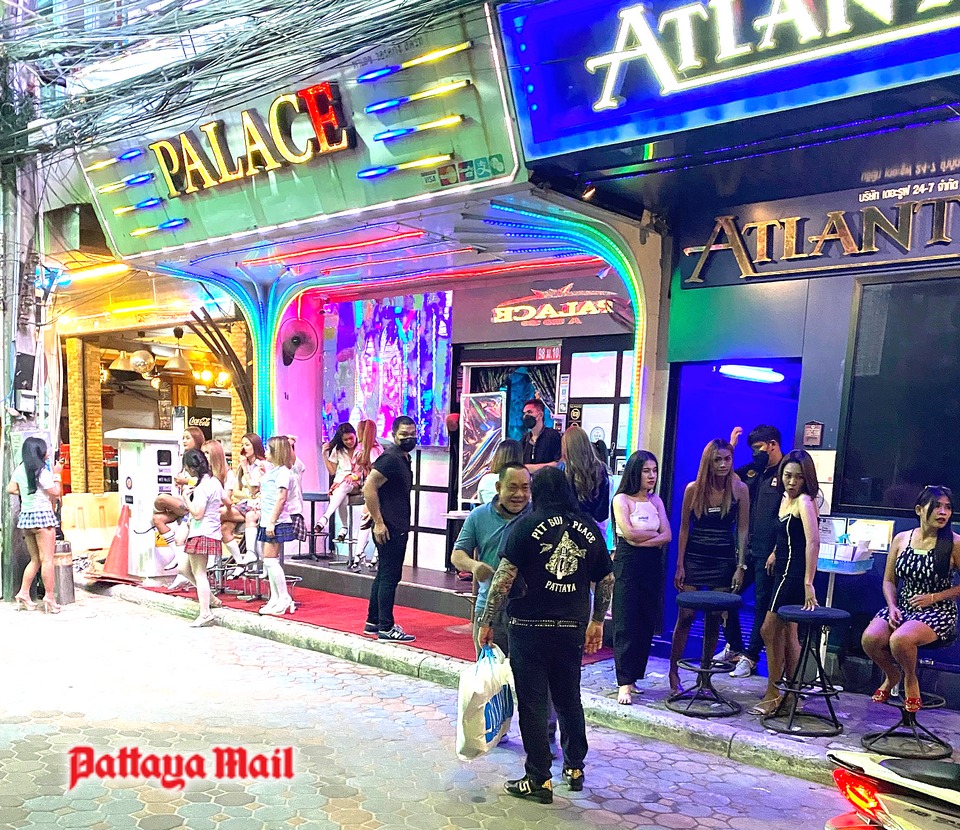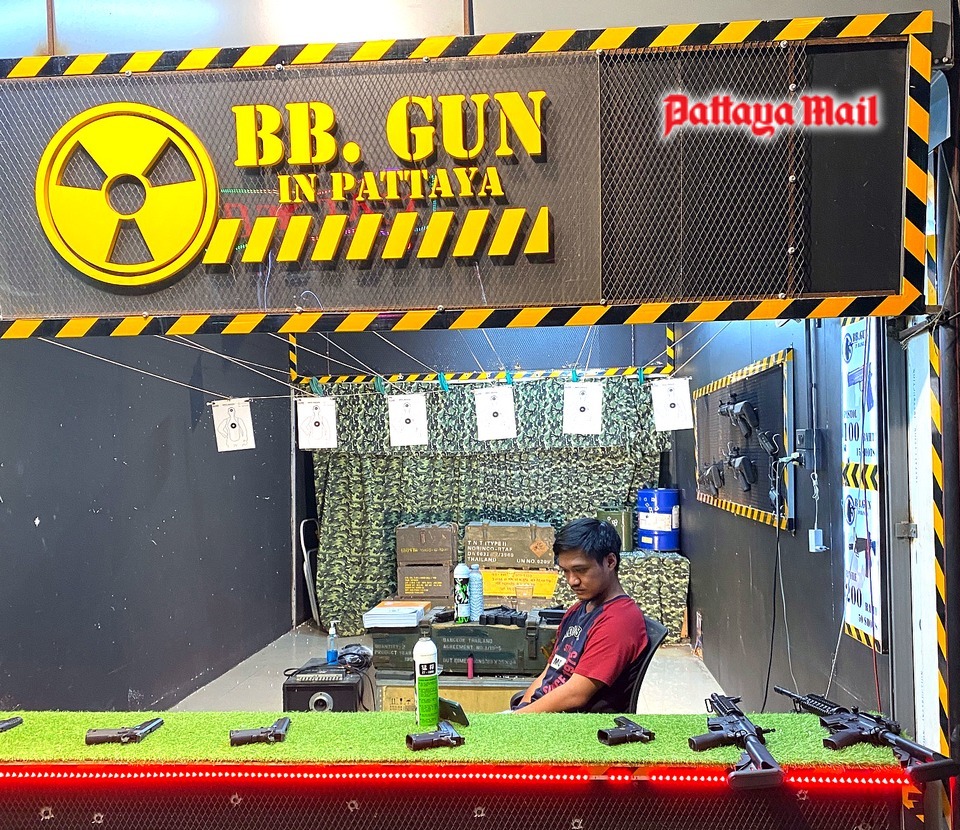
Waitresses with frilly skirts and white socks are back on Pattaya’s most famous strip. Several nightclubs, formerly go go bars but recently transformed into eateries with a special certificate from the health and safety executive, are now recruiting street customers more or less like they always did. The sole difference in March 2022 is that the chrome pole dancers, wearing a hairnet and not much else, are absent from darkened stages. That’s the idea anyway.
There are no longer crowds thronging the Walking Street, but appearances can be deceptive. Khun Wee, a security officer outside Club 808, confided “Many of the visitors before the pandemic were Chinese tour groups who came to gawk and maybe visit a convenience store. But they never spent a baht in a nite spot. But the tourists now are mostly Europeans eager to enjoy themselves in female company rather than wandering around the Street.” He concluded that business wasn’t great but better than you might think.

The Street has other surprises in store. Halfway down, there is a fairground-style gun stall where you can target-practice with handguns or rifles. Dana, the assistant on duty, said, “We thought the Americans were coming for Christmas, but they never showed up here.” He explained that not all his customers are interested in becoming a crack shot. “One depressed guy yesterday wanted to rent a gun to blow his brains out. He said he’d tried to drown himself in the sea, but the tide was out.”
Then there’s the mystery of the Nashaa nightclub which was totally destroyed by fire last year. Explanations at the time varied from exploding gas cylinders and rats gnawing through wires to nightwatchmen hastily cooking a meal and much darker theories of deliberate conflagration. No public explanation has ever been given. The nearest we got was a statement by the chief insurance assessor six months ago that his findings were “interesting”.

The once-famous tourist police and their foreign volunteers, featured in the TV series Big Trouble in Thailand, have vanished from Walking Street. Never to return we are told. In fact, the one kilometer complex seems to be self-policing these days with no visible sign of the boys in brown most evenings. The caretaker at a crumbling bar, apparently known as Beware of the Dog, thinks he has the answer. “All the bars have bouncers to take care of any trouble makers. Having uniformed police patrolling outside all these nighteries, now magically transformed into restaurants, isn’t really a good idea.” He adds a wink.
The one million dollar question, of course, is the future of Walking Street. Loyalists say that the 75 percent of premises still shuttered will open again once mass tourism resumes. Realists say that the powers-that-be want change which basically means demolition and replacement by a business and leisure district (neo-Pattaya) emulating Miami or Singapore. In the end, it’ll depend on what the cash-rich Thai and Chinese investors of the Eastern Economic Corridor decide to do. The guys who have already built the ring roads, transformed the piers, repaired the beaches (or tried to) and planned a high speed railway to Bangkok are hardly impressed by Pattaya’s traditions. Expect the debate to heat up in the autumn.
 |
 |
 |





